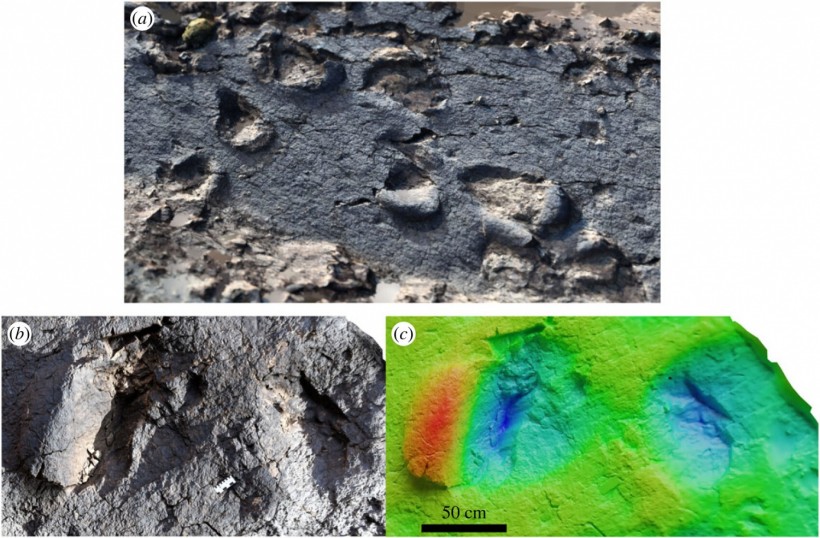
Iin isometric view, displaying several sauropod tracks with displacement rims occurring in the same direction for each. (b), (c): close ups of track * in figure 4 in true colour and height map, respectively (red–blue = 30 cm), showing how the raised area of sediment in front of the track remains coherent, slipping at the sides.
A team of paleobiologists from Sidi Mohamed Ben Abdellah University, Liverpool John Moores University, and the University of Birmingham has unearthed three previously unknown dinosaur track sites in Morocco, Phys.org reports.
These extraordinary findings shed light on the lives of dinosaurs that roamed the Earth between 145 and 165 million years ago during the Jurassic period.
Unveiling a Prehistoric Playground
Imagine stepping into a prehistoric playground where massive dinosaurs once roamed, leaving behind a tangible record of their existence.
That is exactly what these paleobiologists discovered while exploring Morocco's Imilchil-Outerbat region.
They discovered three extraordinary track locations hidden for eons within the Isli geological formation.
A Glimpse into the Jurassic World
The thrill of this discovery lies not only in its novelty but in the diversity of tracks found. These tracks are like cryptic messages from the past, revealing the footprints of various dinosaur species.
Among the most fascinating finds are those of the colossal sauropods, the formidable theropods, and the herbivorous ornithopods. Additionally, intriguingly bird-like theropod tracks have also been unearthed.
At one site, a trackway stretching an impressive 61 meters was found. It boasts 18 individual trackways, offering a snapshot of an ancient dinosaur highway.
Within this extensive stretch, six trackways are believed to have been crafted by sauropods, 11 by theropods, and one by an ornithopod. The diversity of tracks in this location provides valuable insights into the ecosystem of the Jurassic period.
Read Also: The Svalbard Reindeer Survived a Limited Gene Pool - Can It Weather Climate Change?
Piecing Together the Puzzle
While the tracks themselves are a significant discovery, the absence of corresponding body fossils presents a unique puzzle for scientists.
Despite the plethora of tracks found, linking them to a specific dinosaur species remains challenging due to the scarcity of dinosaur fossils in the area.
This lack of body fossils raises questions about the potential reasons behind this disparity. Were these tracks left by nomadic dinosaurs that did not settle in the region? Or is there a hidden graveyard of dinosaur remains yet to be unearthed beneath the Moroccan sands?
The quest for answers continues as researchers aim to bridge this intriguing gap between tracks and fossils.
Unlocking the Past's Mysteries
These paleobiologists employed cutting-edge techniques to breathe life into these Jurassic tracks.
3D models of the track sites have been meticulously created, allowing scientists to analyze and preserve these incredible imprints for future generations.
The newfound dinosaur track sites offer a tantalizing glimpse into a world long gone, where dinosaurs once roamed the ancient landscape.
Stay posted here at Tech Times.
Related Article: This Box of Donated Artifacts Shocks Experts as They Turn Out to Be Neanderthal Bones










